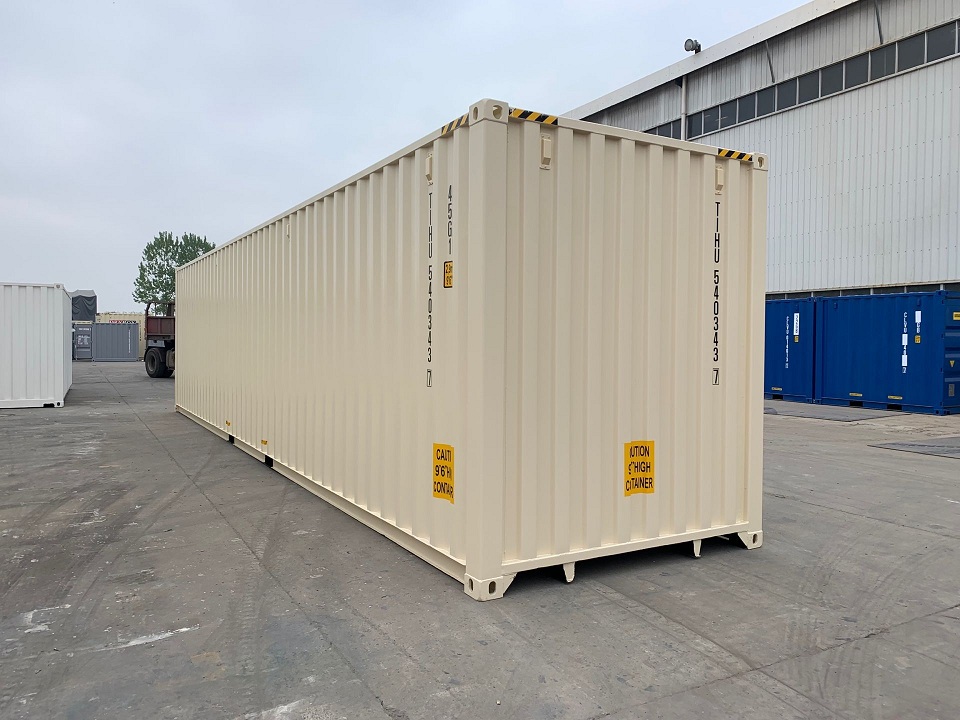Unlike your standard containers, the Delaware open container is vital for transporting oversized or bulky cargo in ways its standard counterparts can’t. It is particularly useful in construction, manufacturing, and heavy machinery, where large items like machinery, pipes, and raw materials are common. However, to maximize the benefits and ensure the safety and integrity of the cargo, we must know how to properly load and unload cargo with the help of these specialized containers.

How to Use Open Containers
Prep Work for Cargo Loading
Like everything else, prep work is the first crucial step in the loading process. Before beginning, ensure the Delaware open container you’re going to use is clean and free from residue from previous shipments. At the same time, inspect the container for any damages or structural weaknesses that could compromise its integrity during transport, and check that the container’s dimensions match the cargo size to prevent any overloading or shifting.
Furthermore, evaluate the cargo to determine the best arrangement for weight distribution. Heavier items should be placed at the bottom to create a stable base, while lighter items should be positioned on top. This not only helps in maintaining balance but also reduces the risk of damage to lighter items.
Loading Techniques
After the prep work when using a Delaware open container, you can begin loading by carefully positioning the heaviest items at the bottom of the container. Use forklifts or cranes to lift and place the cargo, ensuring it is centered and stable. For oversized items, you might want to cover them with the container’s removable roof bows and tarpaulin to increase their security during the shipment process.
As you continue loading the Delaware open container, arrange the items neatly to maximize space efficiency while maintaining balance. It is essential to keep a low center of gravity to avoid tipping. Avoid stacking items too high, as this can create instability. If the cargo comes in various shapes and sizes, use padding materials to fill gaps and provide additional support in your preferred Delaware open container.
Once all the cargo is loaded, you can cover the container with tarpaulin. To make sure the cover works, ensure the tarpaulin is securely fastened to protect the cargo from weather elements and external contaminants.
Prepping for Cargo Unloading
It turns out that unloading cargo from Delaware open container requires the same amount of preparation and care as loading it. To do it, you can begin by inspecting the container upon arrival to ensure no signs of damage or tampering. Check the integrity of the tarpaulin and the condition of the straps and chains securing the cargo.
Before removing the tarpaulin, make sure the area around the container is clear and you have sufficient space to maneuver the equipment needed for unloading. Gather all necessary tools and ensure they are in good working condition. After all, having a clear plan for the unloading sequence will help you maintain balance and prevent accidents.
Best Practices of Cargo Unloading
Start the unloading process when using a Delaware open container by carefully removing the tarpaulin and any roof bows if they were used. Inspect the cargo to ensure it is still securely fastened and has not shifted during transit. In this step, you can begin with the topmost and lightest items by using appropriate equipment like forklifts or cranes to lift and move the cargo.
As you unload, pay attention to maintaining balance within the container. Removing items without proper maneuvering and planning can cause the remaining cargo to shift or tip over. If the cargo includes fragile or delicate items, handle them with extra care to avoid damage. Use dunnage or padding materials to protect them during the unloading process.
For heavier items at the bottom of the Delaware open container, ensure that the lifting equipment can handle the heavier weight. Use the same techniques as during loading to lift and move these items safely. After all the cargo has been unloaded, conduct a final inspection of the container to ensure no items have been left behind and the container is clean and ready for its next use.
Easier, More Efficient Cargo Loading with Tradecorp
So long as we know how to load and unload cargo when using a Delaware open container, any non-conventional cargo that standard containers cannot handle is no longer a problem. For unconventional cargo issues like this, Tradecorp comes with 20-foot open containers with soft tops and 40-foot open containers with various tops to protect your business needs. Fill in your order form, visit our blog and we will contact you shortly to discuss how to fulfill your request.
Sales, Rentals, Custom Order, and Turnkey Solutions
If you need more information on shipping container prices, contact us by filling the form. we will give the best respond to all request as soon as possible, so please make sure to provide the correct information.
We are always available to answer any questions or concerns you may have about our products and services. one of our team members will contact you as soon as possible after you fill out and submit the form.
Have Any Questions?
Tradecorp supplies high-quality new and used shipping containers for sale throughout the Americas. Our experienced container consultants can walk you through the purchase process to identify the perfect container that best suits your requirement. Please fill-out the contact form and one of our staff will be in touch.
FOR SHIPPING INDUSTRY NEWS, REFER TO THESE SITES
SHIPPING CONTAINER ACCREDITATORS
Join The Tradecorp Community
TRADECORP CONTAINER SALES & RENTAL LLC
Shipping Containers for Sale in Florida
Stay in touch
TRADECORP SHIPPING CONTAINERS
SALES & RENTAL
Shipping Containers for Sale in Florida
Want more?
Stay in touch
© 2023 Tradecorp USA






